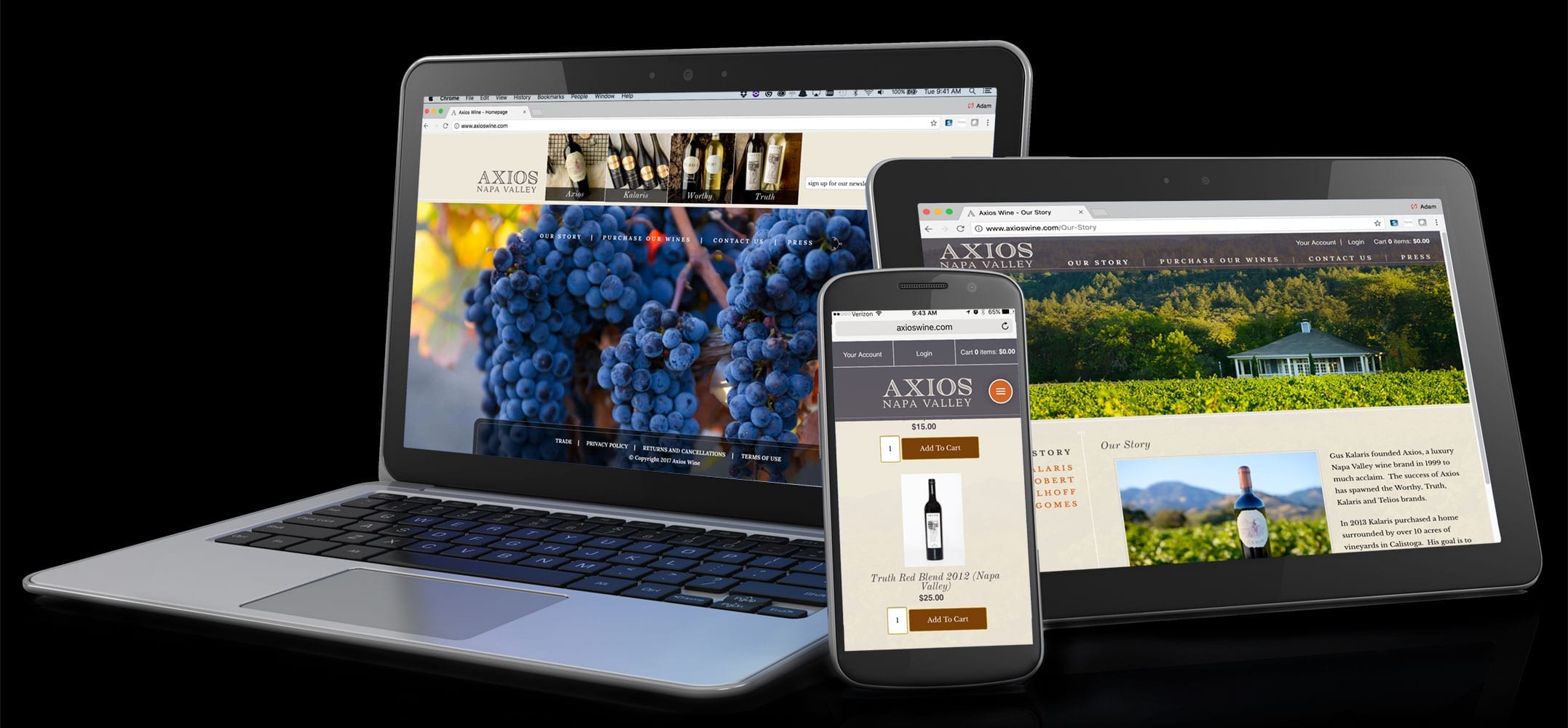Own Your Website’s Future
We’ve seen the future of beverage website design, and it’s segregated (sorry). Ever since winery eCommerce has come out of its most basic infancy, many of the big players in the game have touted turnkey systems where your site’s “brochureware”… the part of your website where people first identify with your brand and figure out what you’re trying to sell… is hosted under the same proprietary platform (which that vendor has invented and coded from the ground up) as the visitor’s “shopping experience”. On a basic level, it makes a ton of sense: the winery owner can control every aspect of their site’s content and wares from a single online control panel with a single set of login credentials. And if you update your vintages, harvest facts, sales specials, etc, those changes happen site-wide with no need for duplicated efforts. Of course, this is moot when it comes to distillery websites, since they can’t sell product online currently, but we think that will change in the future. In the meantime, there is always merch.
So, what’s the problem with turnkey winery eCommerce? The simplest answer is: WordPress is killin’ it. I mean that both ways.
While turnkey winery eCommerce systems rest on the laurels of one-stop site control, they simply can’t compete with the user-friendliness that open-source platforms—website building blocks that can be easily modified at the code level by any good developer, or radically content-managed by the total layman—afford. Far-and-away, segment leader WordPress has, as of this writing, been voted heavyweight champion by coders and regular human beings alike.
This market force has driven exponential improvements in the user-friendliness of the platform, as well as it’s feature-richness and the availability of hyper-affordable off-the shelf “themes” created to afford layman users professional-level visual and functional site design without the need to employ code (or coders). This in turn has created a “WordPress culture” where the percentage of site admins who understand the basic idiom of the WordPress “dashboard” (it’s a set of online controls) dwarfs every other platform. This may sound like an ad for WordPress, but it’s just the way of the world right now.
What was that I said about ownership? Well, to backtrack a little, the other “catch” with those aforementioned turnkey systems is that you are really just renting space on their NON open-source, proprietary platform. Every player in the (rapidly dwindling) turnkey winery eCommerce game charges winery owners a minimum monthly “rent” of $150 to provide a legally compliant wine shopping experience and the aforementioned “brochureware”. Let me be clear: this is not a ripoff. The glory of these shopping cart systems is in their ability to automatically navigate the hellish intricacies of selling alcohol online: compliance issues, fulfillment issues, state-by-state licensing and taxation issues…the list goes on. Any of these turnkey systems contain complex checks and balances that provide any user with tools to navigate such intricacies with ease. You need this.
The problem is, your “brochureware” is on that platform as well. If you stop paying “rent” on that platform, you cannot just pack up that 75% of your website design, bring it to another turnkey provider, and have them host it like nothing ever happened: their code will be totally different than the code your site was first built in. You’ll have to rebuild from the ground up. Yeesh.
As of this writing, the turnkey folks are starting to see the writing on the wall, and we’re already seeing the quantum shift: a couple of the big players now wisely re-positioning themselves primarily as providers of comprehensive winery eCommerce systems, while recommending that customers do in fact create the rest of their website on WordPress. And we’ll certainly see the rest of them pivot to this position in the next three years or perish. The question for now is: how elegantly do they deal with “segregation?”
Know Thyself, Know Thy Shopping Cart
You’ll recall I’d said something earlier about not duplicating your efforts as a site admin. E.g., if you change what product is available in your shopping cart, that new vintage and whatever production notes come along with that should also change on your site’s “Shop” page without a lot of fuss. This is just one of many examples where you need your shopping cart to be able to “talk” to the rest of your site in real time.
With the sea-change from turnkey winery eCommerce to the cart-plus-front-end, multi-platform ethos, the big issue becomes how elegantly these two elements can communicate with each other. How handily the various shopping cart services have developed code to bridge this divide is… and will continue to be…the element that defines their future successes. It affects not only administrator and user experience, but the bottom line of how expensive it is for your web development partner to integrate your WordPress website to its shopping experience.
Add to this some other questions, such as how handily your shopping cart system deals with the POS needs of a brick-and-mortar winery (when applicable) or how well their purchase reporting plays nicely with your wine warehouse, and whom you choose to host your shopping cart becomes an extremely personal choice.
If you’re on the brink of making this decision, we’d love to help you figure out what’s best for you. You know where to find us.










